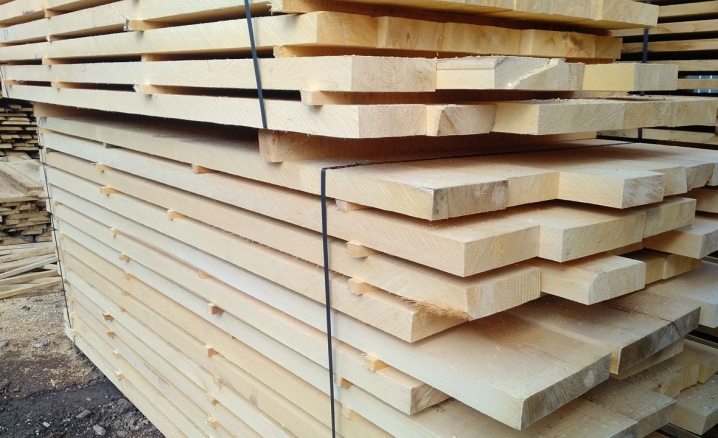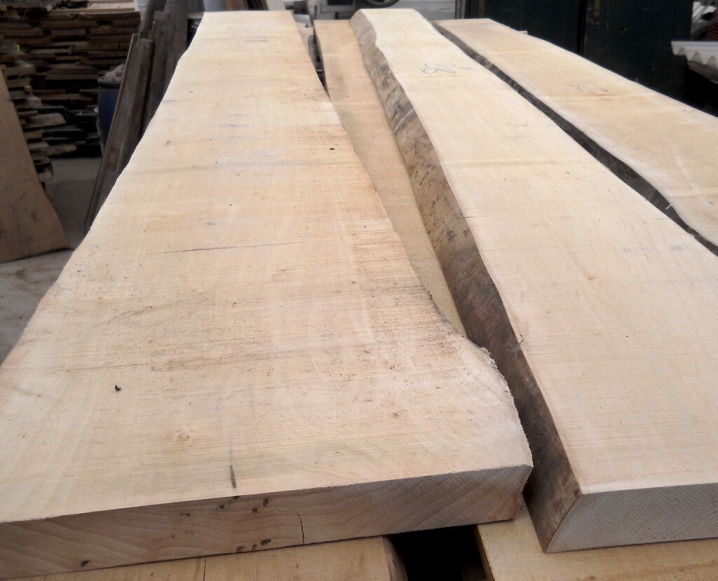All about linden planks

Linden belongs to deciduous trees, the genus of which is at least 45 species. The distribution area of linden is the temperate zone located in the Northern Hemisphere. This tree species is most common in Tataria, Bashkiria and on the territory of Chuvashia, as well as in the forest-steppe zone in the European part of Russia.

Peculiarities
By its structure, linden is a tall tree, reaching a height of up to 30 m. His crown is thick and resembles a large egg in the shape of the structure. The wood of this tree is prized for its lightness and uniformity. For technical purposes, linden is harvested when it reaches an age of at least 80 years.
Linden wood belongs to the non-nucleated, scattered vascular type. The core of the trunk of this tree has the same properties and color as the wood located on the periphery, which makes it possible to classify the linden as a sapwood type. In appearance, linden wood has a whitish color with a pink tint; in structure, this material is soft.

The expressiveness of the woody texture in linden is poorly expressed. If you look at the cross-section of the trunk, you can see that the growth rings are poorly defined. From the center of the trunk to the sides are thin so-called core rays, which, when cut longitudinally, look like stripes with a darker shade. Linden in the process of processing reveals a rather high gloss index of wood, which is at the same level of luster intensity of birch material, but at the same time is inferior to conifers.
Since the moisture-conducting vessels in the wood are small and numerous, the linden board has a high degree of equal density throughout its entire length.

Main characteristics
The main advantages of linden wood are ease of processing, the ability to keep their shape well, absorb coloring components, and also not crack when dried. When heated, linden board gives off a subtle honey aroma, so this lumber is traditionally used for interior decoration of a sauna or bath. Linden phytoncides have a beneficial effect on the human respiratory system, and the material retains this property even after decades. Physical indicators of linden wood:
- material density - 490 kg / m ³;
- average specific gravity - 0.55 g / cm 3;
- strength of dry wood in compression in the share direction - 40 MPa;
- bending strength - 70 MPa;
- shrinkage rate - 16% of the total.

Linden wood has a high ability to retain moisture, therefore the moisture content of freshly sawn workpieces can reach 100%. This material has the ability to bend well in the desired direction, and also has high wear resistance. The linden board is prized for its ability to retain heat and does not attract rodents. The material has its advantages and disadvantages. The positive properties of the blanks are as follows:
- wood lends itself well to processing, without forming chips, chipping and cracking;
- due to the poorly expressed texture of the wood pattern, the treated surfaces look smooth and uniform;
- in appearance, the board looks like a valuable material with a noble milky pink tint;
- the raw workpiece is very pliable when carving or bending, but after drying, the product acquires a high degree of strength;
- the material is not subject to decay, since after drying it does not absorb moisture;
- light tones of wood do not change their shade over time;
- the material is easily polished, therefore it is used not only for construction purposes, but also in folk crafts.

As for the shortcomings, the only drawback of linden wood is its softness. In some cases, this complicates the woodworking process.
Species overview
The demand for linden products always remains at a high level. Boards are used for construction purposes, lining - for interior decoration, and folk craftsmen work with bast in the manufacture of souvenirs and household items. Sawing blanks in various ways makes it possible to produce different types of sawn timber.
- Lining... This term means a planed dry board equipped with a tongue-and-groove connection. The color of the lining is beige with a slight pinkish tint, due to which this material is considered one of the best options for decorative interior decoration of premises. Most often, lining is used for wall cladding in steam rooms, baths or saunas. The material is resistant to decay and mold. The installation of the lining is performed on a pre-prepared crate in the form of a frame. This wood material is an excellent thermal insulator, easy to clean, retains its aesthetic qualities and is resistant to dirt.

The lining has standard dimensions. The thickness of this lumber is from 16 to 20 mm, the width of the board is from 15 to 20 cm, and the length ranges from 3 to 6 m. Depending on the quality level, the lining is subdivided into grades. Grade A is considered the most expensive and highest quality. Grade B is the mid-range option in terms of price-performance ratio, while Grade C is the lowest-grade and inexpensive option.
- Euro lining... Unlike the usual varieties of domestic lining, this lumber is made only from high quality raw materials. Experts note that the tongue-and-groove connecting element of the Euro lining is made more accurately and reliably. All euro lining must undergo a procedure called forced drying, thus, the finished product has improved quality standards and claims a high cost.

- Edged board. Such sawn timber should be understood as a piece that is processed along all 4 edges and does not have bark on the sides. The rectangular section of the edged board ranges from 8X16 to 100X250 mm. The thickness of the boards can reach from 2 to 10 cm. The main requirement for an edged board is to maintain clear and geometrically correct shapes. Often the edged board is used as a regimental board when arranging a steam room. The shape of the board depends on the method of cutting the linden blank. The highest quality lumber is a radial cut, which is carried out strictly along the core of the trunk, which guarantees the least moisture effect on the wood.
With semi-radial sawing, the board already loses in quality and belongs to the middle price category, and with tangential sawing, the cheapest blanks are obtained, which are prone to swelling and shrinkage.

- Unedged board... This type of lumber is divided into a semi-edged board, when after sawing on one side of the workpiece, a layer of bark remains, as well as a completely unedged version, when the bark remains on 2 side surfaces of the board. The thickness of unedged lumber can be from 25 to 50 mm, and the length is 3 or 6 m. This type of linden materials is used only for rough work, since the appearance of the products is unpresentable. The cost of the board is small, but the quality is good.

Linden timber lumber perfectly shows its qualities in conditions of high temperatures and high humidity, without changing their properties.Log houses or baths are made of round linden, and lining is often used for decorative interior decoration in brick houses.
Application
Linden wood has a refined and very pleasant aroma; when processed, its soft and slightly viscous structure does not create difficulties not only for sawing, but also for carving. Finished linden products have an aesthetically pleasing appearance and always look solid. Linden is used for construction or interior arrangement of premises: for kitchens, baths, saunas. This tree is irreplaceable when setting up a steam room. Smooth linden boards are used for shelves, they are also used to make the ceiling, sheathe the walls, and make a canopy.



Deciduous tree - linden - has long been appreciated in Russia not only by builders, but also by folk craftsmen... Various handicrafts, sculptures, kitchen utensils, musical instruments, furniture were made of wood or bark, and later drawing boards for drawing work were made of linden. Matches, pencils, equipment for seals or stamps are made of linden material. Even sawn timber waste is used: when wood is burned, coal is obtained, which is used as a filler for water filters. The filtration quality of lime coal is superior to analogs obtained from other types of wood.














The comment was sent successfully.